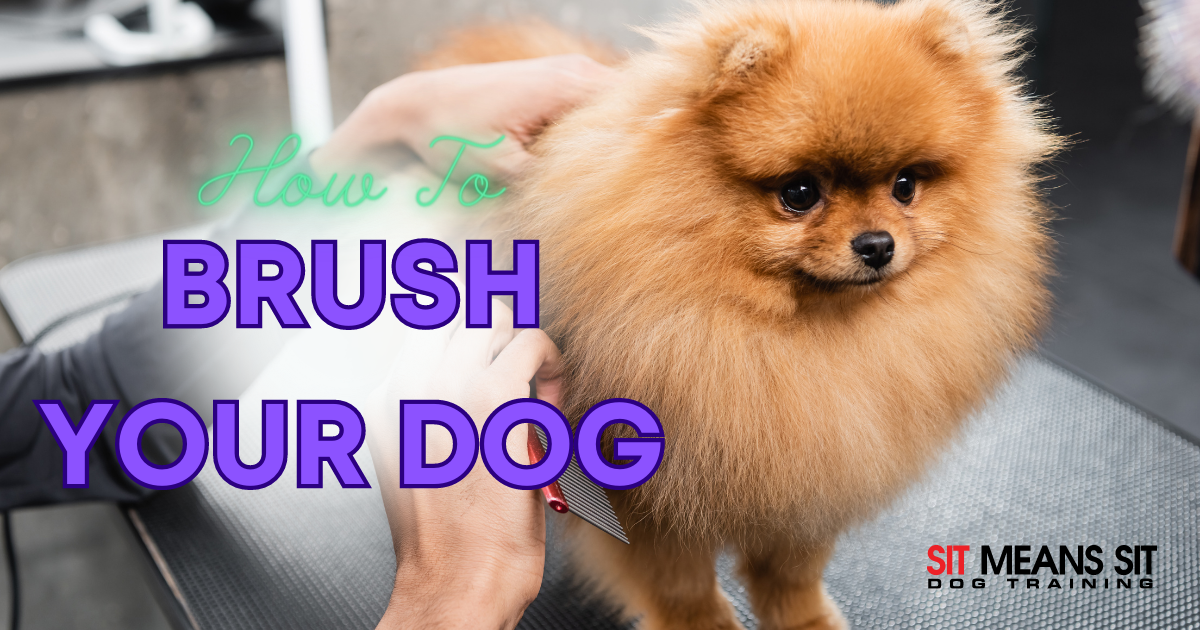Regular brushing is an essential part of maintaining your dog’s coat health and overall well-being. However, not all dogs have the same coat type, and each requires specific grooming techniques and tools to keep their fur in top shape.
Here’s how to brush your dog based on their coat type.
Short-Haired Coats
Breeds like Boxers, Beagles, and Dalmatians typically have short, sleek coats that require minimal maintenance. To keep their fur in good condition, use a soft-bristle brush or a grooming mitt to remove loose hair and distribute natural oils. Brush in the direction of hair growth, paying attention to areas prone to shedding, such as the back, sides, and belly.
Long-Haired Coats
Long-haired breeds like Shih Tzus, Afghan Hounds, and Yorkshire Terriers require more extensive grooming to prevent matting and tangling. Begin by using a slicker brush to remove tangles and mats gently. For dogs with thick undercoats, a de-shedding tool can help remove loose hair and reduce shedding. Finish off with a comb to ensure all knots and tangles are eliminated.
Double-Coated Coats
Breeds with double coats, such as Siberian Huskies, Golden Retrievers, and Australian Shepherds, have a dense undercoat and a longer, protective topcoat. Brushing these coats is crucial to prevent matting, remove dead hair, and maintain their insulating properties. Start with a slicker brush to remove loose hair from the undercoat, paying close attention to areas like the neck, chest, and hindquarters. Follow up with an undercoat rake or a de-shedding tool to thin out the dense undercoat.
Curly or Wavy Coats
Dogs with curly or wavy coats, like Poodles, Bichon Frises, and Portuguese Water Dogs, require regular brushing to prevent matting and maintain their characteristic curls. Use a slicker brush or a comb with wide-spaced teeth to gently untangle knots and remove loose hair. To keep the curls intact, consider using a spray conditioner or detangler to make brushing easier and minimize breakage.
Smooth Coats
Smooth-coated breeds, including Dachshunds, Greyhounds, and Doberman Pinschers, have short, dense fur that requires minimal brushing. However, regular brushing can help remove loose hair and keep their coat shiny. A grooming mitt or a soft-bristle brush is usually sufficient for these breeds. Focus on removing debris and distributing natural oils for a healthy, glossy coat.
Wire-Haired Coats
Wire-haired breeds like Terriers, Schnauzers, and Wirehaired Pointers have rough, wiry coats that need specialized attention. Use a slicker brush or a stripping knife to remove dead hair and maintain the coat’s texture. Hand-stripping, a technique that involves pulling out dead hair by hand, may be necessary for some wire-haired breeds. Consult a professional groomer if you are unsure about hand-stripping.
Brushing your dog’s coat is not only essential for their physical appearance but also for their overall health and well-being. By understanding your dog’s specific coat type and employing the appropriate grooming techniques and tools, you can keep their fur in optimal condition.

